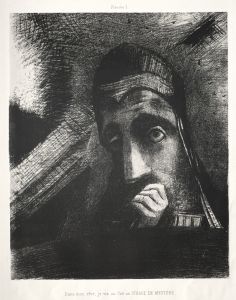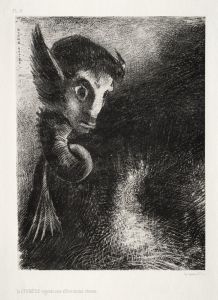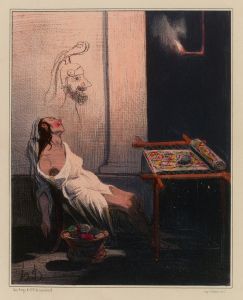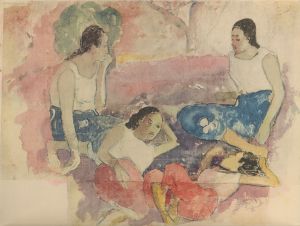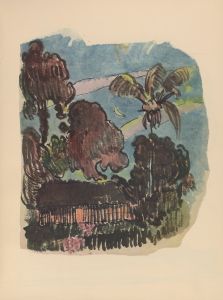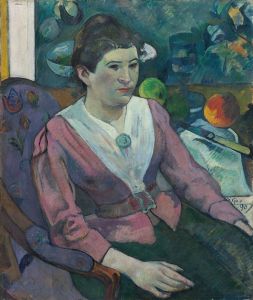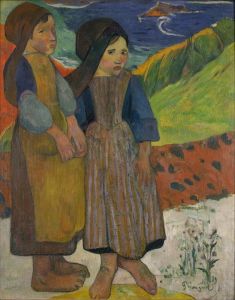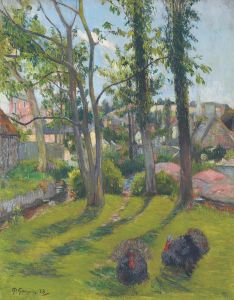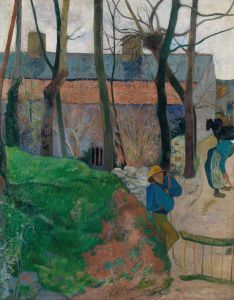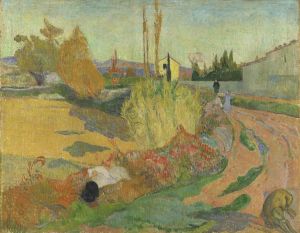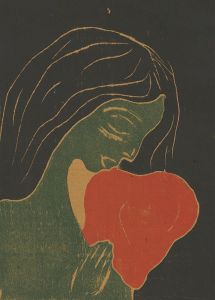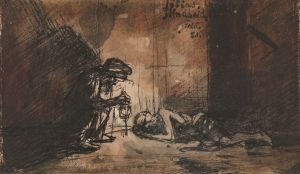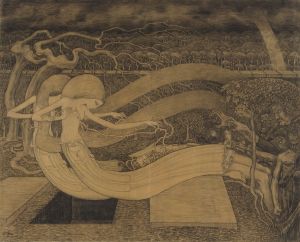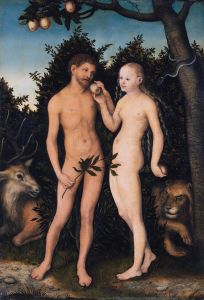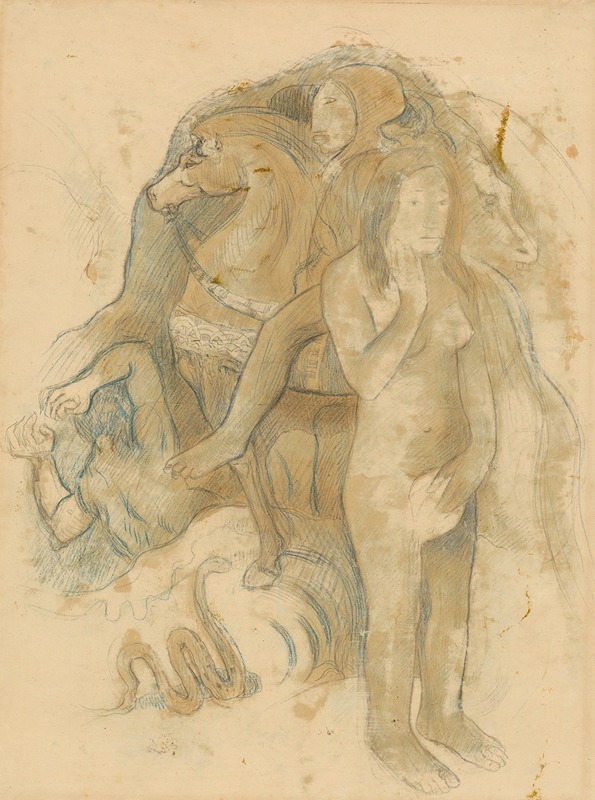
Eve [‘The Nightmare’]
A hand-painted replica of Paul Gauguin’s masterpiece Eve [‘The Nightmare’], meticulously crafted by professional artists to capture the true essence of the original. Each piece is created with museum-quality canvas and rare mineral pigments, carefully painted by experienced artists with delicate brushstrokes and rich, layered colors to perfectly recreate the texture of the original artwork. Unlike machine-printed reproductions, this hand-painted version brings the painting to life, infused with the artist’s emotions and skill in every stroke. Whether for personal collection or home decoration, it instantly elevates the artistic atmosphere of any space.
Paul Gauguin's painting "Eve [‘The Nightmare’]" is a notable work by the French post-impressionist artist, who is renowned for his bold use of color and synthetist style that were distinct from impressionism. Gauguin's work often explored themes of spirituality, symbolism, and the human condition, and "Eve [‘The Nightmare’]" is no exception.
This painting, created in 1899, is part of Gauguin's later period when he was living in Tahiti. During this time, he was deeply influenced by the culture and natural environment of the island, which is reflected in the vivid colors and exotic themes of his work. "Eve [‘The Nightmare’]" is a compelling example of Gauguin's interest in biblical and mythological subjects, reinterpreted through his unique artistic lens.
In "Eve [‘The Nightmare’]", Gauguin presents a reimagined version of the biblical Eve, a common subject in Western art, but with a twist that reflects his personal vision and the influence of Tahitian culture. The painting depicts Eve in a dream-like state, surrounded by a lush, tropical landscape that is characteristic of Gauguin's Tahitian works. The use of vibrant colors and bold outlines is typical of Gauguin's style, emphasizing the emotional and symbolic content of the scene over realistic representation.
The painting's title, "The Nightmare," suggests a darker interpretation of the Eve story, possibly alluding to the themes of temptation and the fall from grace. Gauguin's Eve is not the traditional Western portrayal of the first woman but rather a figure that embodies both innocence and the potential for transgression. This duality is a recurring theme in Gauguin's work, where he often explored the tension between civilization and the natural world, as well as the complexities of human nature.
Gauguin's time in Tahiti was marked by a desire to escape the constraints of European society and find a purer, more authentic way of life. This quest for authenticity is evident in "Eve [‘The Nightmare’]", where the lush, untamed landscape serves as a backdrop for the exploration of primal themes. The painting reflects Gauguin's fascination with the exotic and the spiritual, as well as his ongoing struggle to reconcile his artistic ambitions with his personal life.
"Eve [‘The Nightmare’]" is a testament to Gauguin's innovative approach to art, blending elements of symbolism, primitivism, and post-impressionism to create a work that is both visually striking and thought-provoking. The painting is a reflection of Gauguin's complex personality and his quest to capture the essence of human experience through his art.
Today, Gauguin's work, including "Eve [‘The Nightmare’]", is celebrated for its bold experimentation and its influence on modern art movements. His exploration of color, form, and symbolism paved the way for future artists to break free from traditional constraints and explore new artistic possibilities. "Eve [‘The Nightmare’]" remains an important piece in Gauguin's oeuvre, offering insight into his artistic vision and the cultural influences that shaped his work during his time in Tahiti.





